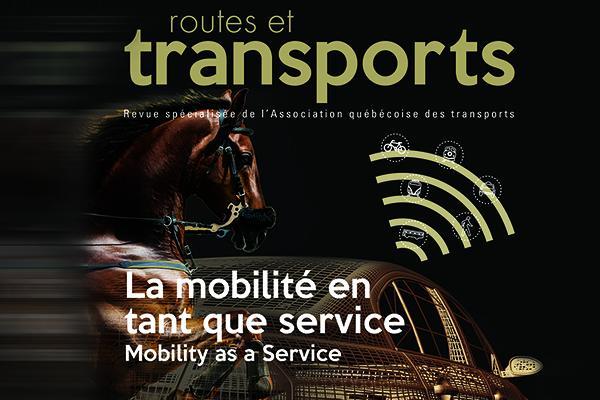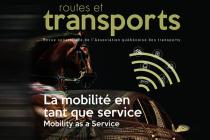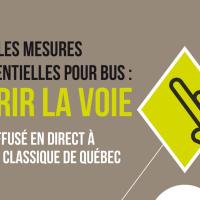An Economic View of Shared Mobility

Transportation change takes place either piece-by-piece over a long period of time or via large-scale changes that occur over a relatively short number of years. Piece-by-piece change includes traditional investments: for example, adding a new lane or a system of coordinated traffic lights or perhaps a new transit line. Examples of large-scale change include the Interstate Highway System in the United States, the Internet, and wireless telecommunication. Change on this scale may be called network investments since they affect an entire region or nation.
The economic impact of networks differs significantly from that of the more common incremental investment. Scale matters. Incremental investment makes change at the margin. This results in linear changes that make it relatively straightforward to estimate impacts. In contrast, network changes generate non-linear changes, often a series of them. One result can be the stimulation of new businesses and industries. In economic terms, these changes generate a shift in demand and supply curves, reflecting the growth of new industries and a structural change in the economy. In contrast, traditional transport investments generate movement along an existing supply or demand curve.
Network-scale change typically generates new jobs and increased economic productivity. For example, the investment in the Interstate Highway System generated annual rates of return of 50 to 60 per cent a year over a couple of decades and accounted for one-fourth of total U.S. productivity growth in the process — and all from just a four-cent-per-gallon tax on motor fuel. Existing economic models do not handle these complex, non-linear changes. In fact, economic forecasts of networks usually underestimate the magnitude of positive economic impacts.
So what does this have to do with shared mobility? Shared mobility can be characterized as a network change. It affects transportation on a large scale, covering not just individual neighbourhoods or a given metropolitan area, but all of North America – and beyond. Specific economic and social impacts are difficult to forecast, in part due to rapid changes in technology and a steady flow of new businesses and entrepreneurs. Implementation has occurred rapidly, from close to nothing five years ago to a robust and complex industry today.
Clearly shared mobility does not provide a parallel with traditional transportation networks such as the Interstate Highway System. Are there any previous examples that might provide some guidance regarding likely changes? A unique characteristic of shared mobility has been the ability to bring innovative services to traditional urban transportation. Taxis have seen no real change since the early years of the 20th century. The last significant change in mass transit services came with the transition from private ownership to public operation some 50 years ago. The re-introduction of light rail may be considered a change and there are a few bus rapid transit systems in place, but by and large transit services have changed very little.
Shared mobility has brought rapid change to the nature and extent of urban transportation. In sum, we are in the midst of de facto deregulation of urban transportation. This has not always been a smooth process, with some cities and even some countries banning certain new services (Germany and Uber and Lyft provides one example). History shows that economic deregulation has rarely been a smooth process, usually with strong opposition from firms that have grown under the historic set of rules. While individual firms may face significant losses, deregulation has also generated broad net economic benefits. These changes include revitalization of the existing industry and benefits for the economy as a whole and society in general.
Detailed studies have been carried out regarding the series of deregulation actions in the United States in the late 1970s and early 1980s.[1] These cover the railroad industry, aviation, and intercity trucking. In each case, the result was a significant decline in costs, the generation of higher quality services, new and expanded markets, and increased profits for most participants (but not for firms unable to adopt to the new way of business). For trucking and aviation, new firms entered the market (the capital intensive nature of railroads limited new entrants, although in most cases new managers took over operations).
Deregulation of the freight industry resulted in 10 to 40 per cent declines in truck freight between 1979 and 1986 and a further 29 per cent drop between 1990 and 1999. Railroad rates declined by 45 per cent between 1984 and 1990. Despite forecasts from traditional firms, service quality improved for small communities and complaints in the trucking industry declined by about 90 per cent by 1981. New entrants entered the trucking market, more than doubling between 1978 and 2004. In contrast however, a series of mergers meant that the number of large railroads dropped significantly (from 39 to eight by 2001).
What does this imply for the future of shared mobility? One significant difference is the lack of any formal government-led deregulation effort. The lack of a new, systematic legal framework has helped to generate some of the chaos that we see in urban transportation, with new services and applications springing up and with rates and service quality determined largely by market forces. While this “Wild West” style environment can be exciting to observe, such classic free market competition does make some observers nervous.
Shared mobility has generated services that provide lower costs (Uber/Lyft are less expensive than most traditional taxis, although certainly more costly than transit). At some point in the future, autonomous vehicles will bring even larger price reductions. New services abound, including shared cars and bikes. Some underserved (largely low-income) communities now have better access to taxi-like services.
So far, there is a steady stream of new entrants (similar to what happened in the trucking industry). Will such competition decline in time – for example will Uber become so large that it controls the market? Uber’s incredibly high market capitalization certainly implies that this might happen, even though this is not a capital-intensive industry the way freight railroads are.
Traditional urban services (taxis and public transit) have lost market share – taxis in particular. Public transit still has opportunities to leverage the new services either as improved last mile/first mile service or to handle high cost, low volume services such as paratransit.
In sum, the deregulation history of other modes has positive implications for urban consumers from de facto deregulation in terms of lower prices and new services. The implication for more traditional service providers is not a positive one – unless they can adapt to the new rules.
In freight deregulation, the government acted to change the rules first and then the market adapted. In urban transportation, the market has acted first. It is logical to assume that some form of new regulations will follow (the reverse of what happened with freight). Indeed, some jurisdictions have begun to set new rules. Will these return things to the previous status quo? This seems unlikely in North America, but may occur in other parts of the world. How much of the current gains might new regulations roll back? The industry is still in its dynamic growth stage, with considerable uncertainty about the future – similar to freight deregulation in its first few years.
Richard Mudge, Ph.D., Compass Transportation and Technology Inc.: Dick@compasstranstech.com
[1] A concise summary of transportation deregulation in the United States can be found at: Thomas Gale Moore, “Surface Freight Transportation Deregulation” in The Concise Dictionary of Economics. http://www.econlib.org/library/Enc/SurfaceFreightTransportationDeregulation.html






















